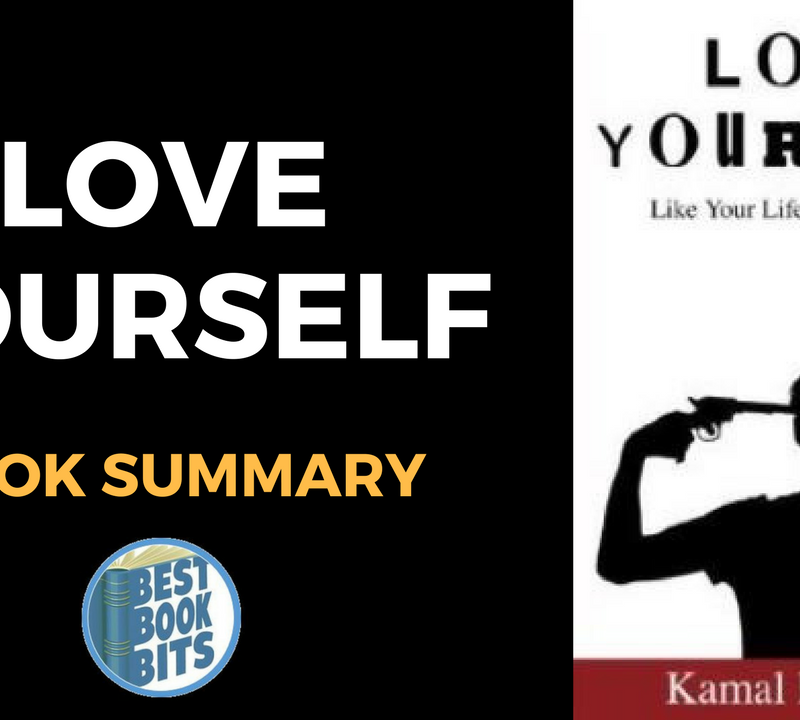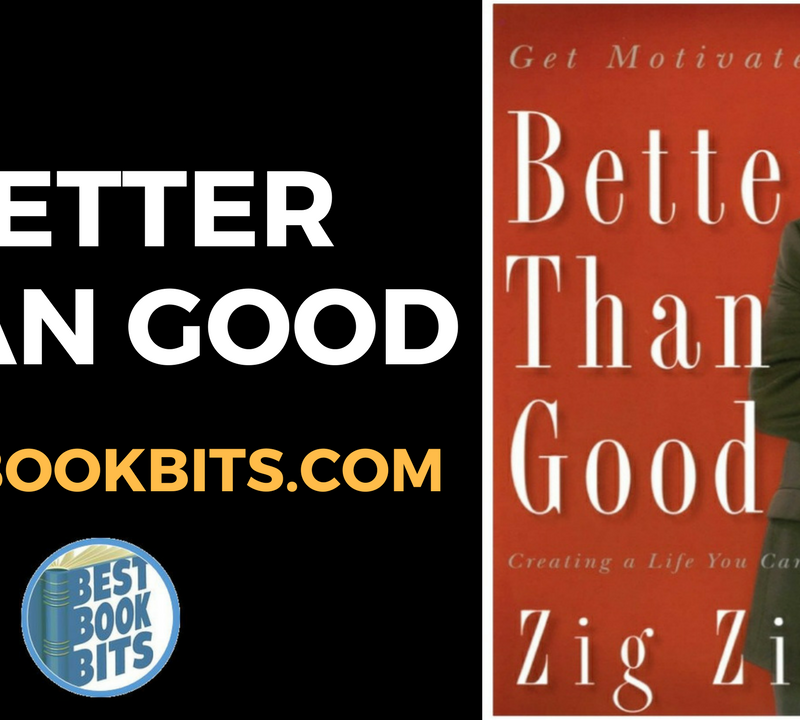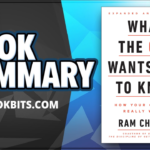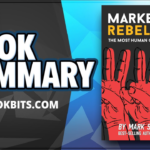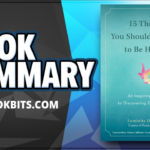< DOWNLOAD THIS SUMMARY IN PDF HERE >
< FOLLOW US HERE > |YouTube |Spotify | Instagram | Facebook | Newsletter | Website
Atlas of the Heart: Mapping Meaningful Connection and the Language of Human Experience
by Brene Brown
In Atlas of the Heart, Brown takes us on a journey through eighty-seven of the emotions and experiences that define what it means to be human. As she maps the necessary skills and an actionable framework for meaningful connection, she gives us the language and tools to access a universe of new choices and second chances—a universe where we can share and steward the stories of our bravest and most heartbreaking moments with one another in a way that builds connection.
Over the past two decades, Brown’s extensive research into the experiences that make us who we are has shaped the cultural conversation and helped define what it means to be courageous with our lives. Atlas of the Heart draws on this research, as well as on Brown’s singular skills as a storyteller, to show us how accurately naming an experience doesn’t give the experience more power—it gives us the power of understanding, meaning, and choice.
Brown shares, “I want this book to be an atlas for all of us, because I believe that, with an adventurous heart and the right maps, we can travel anywhere and never fear losing ourselves.”
Places We Go When Things Are Uncertain or Too Much
Vulnerability is the emotion that we experience during times of uncertainty, risk, and emotional exposure.
In a world where perfectionism, pleasing, and proving are used as armor to protect our egos and our feelings, it takes a lot of courage to show up and be all in when we can’t control the outcome. It also takes discipline and self-awareness to understand what to share and with whom.
Vulnerability is not oversharing, it’s sharing with people who have earned the right to hear our stories and our experiences.
Vulnerability is not weakness; it’s our greatest measure of courage.
Places We Go When We Compare
Comparison says, “Be like everyone else, but better.”
At first it might seem that conforming and competing are mutually exclusive, but they’re not. When we compare ourselves with others, we are ranking around a specific collection of “alike things.” We may compare things like how we parent with families who have totally different values or traditions from ours, but the comparisons that get us really riled up are the ones we make with the folks living next door.
When we compare, we want to be the best or have the best of our group. The comparison mandate becomes this crushing paradox of “Fit in and stand out!” It’s not be yourself and respect others for being authentic, it’s “Fit in, but win.”
The good news is that we get to choose how we’re going to let it affect us. If we don’t want this constant automatic ranking to negatively shape our lives, our relationships, and our future, we need to stay aware enough to know when it’s happening and what emotions it’s driving.
Places We Go When Things Don’t Go as Planned
Disappointment is unmet expectations. The more significant the expectations, the more significant the disappointment.
Every day, sometimes every hour, we are consciously and unconsciously setting expectations of ourselves and the people in our lives—especially those closest to us. The unconscious, unexamined, and unexpressed expectations are the most dangerous and often turn into disappointment.
When the picture or movie fails to play out in real life, we feel disappointed. And sometimes that disappointment is severe and brings shame and hurt and anger with it. It’s a setup for us and for the people involved. Disappointment takes a toll on us and our relationships. It requires considerable emotional bandwidth.
There are too many people in the world today who decide to live disappointed rather than risk feeling disappointment.
Disappointments may be like paper cuts, but if those cuts are deep enough or if we accumulate them over a lifetime, they can leave us seriously wounded. Yes, it takes courage to reality-check, communicate, and dig into the intentions behind our expectations, but exercise in vulnerability helps us maintain meaningful connection with ourselves and others.
< DOWNLOAD THIS SUMMARY IN PDF HERE >
< FOLLOW US HERE > |YouTube |Spotify | Instagram | Facebook | Newsletter | Website
Places We Go When We’re Hurting
We need hope like we need air. To live without hope is to risk suffocating on hopelessness and despair, risk being crushed by the belief that there is no way out of what is holding us back, no way to get to what we desperately need.
But hope is not what most of us think it is. It’s not a warm, fuzzy emotion that fills us with a sense of possibility. Hope is a way of thinking—a cognitive process. Yes, emotions play a role, but hope is made up of what researcher C. R. Snyder called a “trilogy of goals, pathways, and agency.”
Hope is a function of struggle—we develop hope not during the easy or comfortable times, but through adversity and discomfort. Hope is forged when our goals, pathways, and agency are tested and when change is actually possible.
It’s also important to know that hope is learned. According to Snyder, children most often learn the habit of hope from their parents. To learn hopefulness, children need relationships that are characterized by boundaries, consistency, and support. Children with high levels of hopefulness have experience with adversity. They’ve been given the opportunity to struggle, and in doing that they learn how to believe in themselves and their abilities.
Places We Go with Others
What’s the most effective way to be in connection with and in service to someone who is struggling, without taking on their issues as our own?
Compassion is the daily practice of recognizing and accepting our shared humanity so that we treat ourselves and others with loving-kindness, and we take action in the face of suffering. A very similar definition can be found in the research literature: Compassion is a “virtuous response that seeks to address the suffering and needs of a person through relational understanding and action.” What the majority of definitions share, including these, is that compassion includes action. It’s not just feeling, it’s doing.
Compassion is fueled by understanding and accepting that we’re all made of strength and struggle—no one is immune to pain or suffering. Compassion is not a practice of “better than” or “I can fix you”—it’s a practice based in the beauty and pain of shared humanity.
In her book The Places That Scare You, the American Buddhist nun Pema Chödrön writes:
When we practice generating compassion, we can expect to experience our fear of pain. Compassion practice is daring. It involves learning to relax and allow ourselves to move gently toward what scares us….In cultivating compassion we draw from the wholeness of our experience—our suffering, our empathy, as well as our cruelty and terror. It has to be this way. Compassion is not a relationship between the healer and the wounded. It’s a relationship between equals. Only when we know our own darkness well can we be present with the darkness of others. Compassion becomes real when we recognize our shared humanity.
Places We Go When the Heart Is Open
< DOWNLOAD THIS SUMMARY IN PDF HERE >
< FOLLOW US HERE > |YouTube |Spotify | Instagram | Facebook | Newsletter | Website
We cultivate love when we allow our most vulnerable and powerful selves to be deeply seen and known, and when we honor the spiritual connection that grows from that offering with trust, respect, kindness, and affection.
Love is not something we give or get; it is something that we nurture and grow, a connection that can be cultivated between two people only when it exists within each one of them—we can love others only as much as we love ourselves.
Shame, blame, disrespect, betrayal, and the withholding of affection damage the roots from which love grows. Love can survive these injuries only if they’re acknowledged, healed, and rare.
We need more love between us, but also among us. Not rainbow and unicorn love, or commercialized love. We need more real love. Gritty, dangerous, wild-eyed, justice-seeking love.
Places We Go When We Feel Wronged
If you look across the research, you learn that anger is an emotion that we feel when something gets in the way of a desired outcome or when we believe there’s a violation of the way things should be. When we feel anger, we believe that someone or something else is to blame for an unfair or unjust situation, and that something can be done to resolve the problem.
Anger is a catalyst. Holding on to it will make us exhausted and sick. Internalizing anger will take away our joy and spirit; externalizing anger will make us less effective in our attempts to create change and forge connection. It’s an emotion that we need to transform into something life-giving: courage, love, change, compassion, justice.
Or sometimes anger can mask a far more difficult emotion like grief, regret, or shame, and we need to use it to dig into what we’re really feeling. Either way, anger is a powerful catalyst but a life-sucking companion.
Anger, in response to experiencing or witnessing injustice, pain, and struggle, can be a powerful catalyst for change. But, by definition, a catalyst sparks change, it’s not the change.
Places We Go to Self-Assess
Humility is openness to new learning combined with a balanced and accurate assessment of our contributions, including our strengths, imperfections, and opportunities for growth.
What humility isn’t: downplaying yourself or your accomplishments, which according to researchers is modesty, not humility. It’s also not low self-esteem or meekness or letting people walk all over you.
The emotion of humility involves understanding our contributions in context, in relation to both the contributions of others and our own place in the universe. It’s different from pride in that when we feel pride, we focus entirely on the positive aspects of a specific accomplishment (which can still be healthy and productive).
The term “intellectual humility” refers specifically to a willingness to consider information that doesn’t fit with our current thinking. People who demonstrate intellectual humility don’t lack confidence or conviction. They may hold strong views, but they are also open to hearing other points of view. They are curious and willing to adjust their beliefs when faced with new or conflicting information. Humility allows us to admit when we are wrong—we realize that getting it right is more important than needing to “prove” that we are right.
Pride can be good for us, hubris is dangerous, and humility is key to grounded confidence and healthy relationships.
< DOWNLOAD THIS SUMMARY IN PDF HERE >
< FOLLOW US HERE > |YouTube |Spotify | Instagram | Facebook | Newsletter | Website


